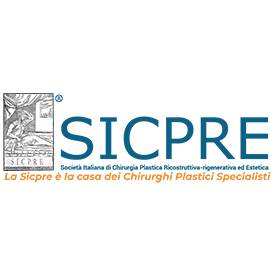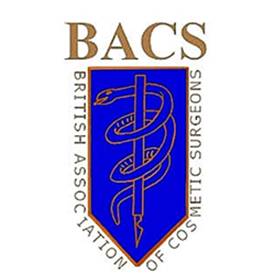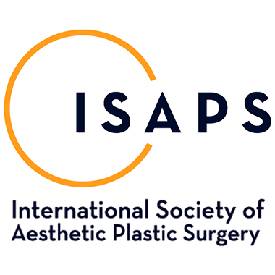
The deep plane facelift is an advanced cosmetic procedure designed to rejuvenate the face by repositioning underlying facial tissues. Unlike surface treatments, such as skincare regimens or dermal fillers, this surgery targets deeper layers affected by factors like aging and sun exposure. By ensuring a youthful appearance, the procedure helps maintain confidence in personal interactions.
A deep plane facelift is an enhanced version of the traditional procedure, focusing on repositioning deeper facial tissues, bypassing the superficial musculoaponeurotic system (SMAS). By leaving muscles and skin attached during the procedure, this technique achieves longer-lasting and more natural-looking results.
Dr. Riccardo Frati, renowned for his expertise, frequently performs this procedure at London’s Harley Surgery. The deep plane facelift is preferred for its natural-looking results and comprehensive rejuvenation, offering patients long-lasting effects.
Choosing a skilled plastic surgeon is crucial for satisfactory outcomes. Dr. Frati’s extensive experience and successful track record ensure quality results. To explore the possibility of a facelift, schedule a consultation at one of his offices in London, Birmingham, or Manchester by calling 020 3633 2619
Interested to know more about what Dr. Frati can do for you?
Deep Plane Facelifts with Dr. Frati
If you wish to explore the comprehensive selection of facelift services provided by the esteemed Dr. Frati or have any other Deep Plane Facelift related questions, please don’t hesitate to get in touch with our friendly team. You have the option to fill out a contact form, send an email to info@dr-frati.com, or utilise the phone numbers listed below, depending on your preferred clinic location.
To inquire about our Facelift in London, feel free to dial 020 3633 2619.
For queries related to our Facelift in Manchester service, kindly call 0161 327 2139.
A deep plane facelift offers several distinct benefits compared to traditional facelift techniques. This advanced surgical procedure focuses on repositioning deeper facial tissues, providing more natural and long-lasting results. Here are the key benefits of a deep plane facelift:
1. Natural-Looking Results
- Anatomical Accuracy: The deep plane facelift repositions the deeper layers of facial tissue, such as the muscles and fat, rather than just pulling the skin. This results in a more natural appearance without the “pulled” or “windswept” look that can be associated with traditional facelifts.
- Maintaining Facial Expressions: By addressing the deeper tissues, the procedure helps preserve natural facial expressions and movements, enhancing the overall aesthetic outcome.
2. Long-Lasting Effects
- Deeper Tissue Repositioning: Because the deep plane facelift works on the deeper structural layers, the results tend to last longer. Patients can enjoy the benefits of the procedure for 10-15 years or more, depending on individual factors like skin quality and lifestyle.
- Durable Outcomes: The deeper tissues are less likely to sag again quickly, providing a more enduring lift compared to techniques that only tighten the skin.
3. Comprehensive Rejuvenation
- Midface and Lower Face Improvement: The procedure effectively addresses aging signs in the midface and lower face, including sagging cheeks, jowls, and deep nasolabial folds. It provides a comprehensive lift that enhances the entire facial contour.
- Restoration of Youthful Contours: By repositioning the deeper tissues, the deep plane facelift restores youthful facial contours, including a more defined jawline and higher cheekbones.
4. Reduced Skin Tension
- Minimised Skin Stretching: Since the lift is achieved by repositioning the underlying tissues rather than pulling the skin, there is less tension on the skin. This reduces the risk of visible scarring and contributes to a more natural look.
- Less Scar Formation: The reduced skin tension also means that the incisions heal better, resulting in finer, less noticeable scars.
5. Improved Skin Quality
Enhanced Blood Flow: By repositioning the deeper tissues, the procedure can improve blood flow to the skin, which may enhance skin quality and promote a healthier, more youthful appearance.
6. Suitable for Various Aging Signs
Versatility: The deep plane facelift is versatile and can address a range of ageing signs, from mild to severe. It can be particularly effective for individuals with significant sagging and deep wrinkles.
7. Natural Healing Process
- Gradual Recovery: The healing process for a deep plane facelift tends to be smoother and more natural, as the deeper tissues provide better support for the overlying skin.
- Balanced Recovery: Swelling and bruising are typically less severe, allowing for a more comfortable and faster recovery period compared to traditional facelifts.
In conclusion, a deep plane facelift offers numerous benefits, including natural-looking, long-lasting results, comprehensive facial rejuvenation, reduced skin tension, and improved skin quality. By focusing on deeper tissue repositioning, this advanced technique provides a more effective and enduring solution for addressing the signs of aging, making it an excellent choice for those seeking significant and natural enhancements to their facial appearance.


Deep Plane Facelift Step by Step Guide
For a basic guide to a Deep plane facelift step by step, then follow this guide below. This is a general description and each procedure individual to your needs.
Initial Consultation: The process begins with a thorough consultation with a qualified plastic surgeon. During this consultation, you’ll discuss your aesthetic goals, medical history, and any concerns you may have. Dr. Frati then evaluates your facial structure, skin quality, and specific signs of ageing to determine if a deep plane facelift is appropriate for you. A tailored surgical plan is developed based on your individual needs and desired outcomes.
Preparation: You’ll receive detailed pre-operative instructions, which may include avoiding certain medications, quitting smoking, and arranging for post-surgery care and transportation. In some cases, you may need to undergo a medical evaluation to ensure you are fit for surgery. Pre-surgery photographs are typically taken to document your current appearance and assist in planning the procedure.
General Anaesthesia: A deep plane facelift is usually performed under general anesthesia to ensure patient comfort and safety throughout the procedure.
Incision: Dr. Frati makes incisions in discreet locations, typically starting in the hairline at the temples, continuing around the ear, and ending in the lower scalp. These incisions are designed to minimise visible scarring. Through these incisions, Dr. Frati gains access to the deeper layers of facial tissue.
Ligament Release: Dr. Frati carefully releases specific facial ligaments that anchor the skin and deeper tissues. This allows for greater mobility and repositioning of the deeper facial structures.
Repositioning Deep Tissue: The deep plane facelift involves lifting and repositioning the deeper layers of the face, including the muscles and fat, to a more youthful position. This step helps restore volume and contour to the cheeks and midface. The skin is gently redraped over the newly positioned tissues without creating tension, ensuring a natural appearance.
Trimming Excess Skin: Any excess skin resulting from the repositioning of deeper tissues is carefully trimmed away.
Closing Incisions: The incisions are closed with fine sutures, and care is taken to ensure minimal scarring. Dr. Frati may also place drains to remove any excess fluid that can accumulate during the initial healing phase.
Bandaging: The surgical area is bandaged, and a compression garment may be applied to reduce swelling and support the healing tissues.

Dr Frati Cosmetic Surgery was established by internationally renowned surgeon to the stars Dr Riccardo Frati. Dr. Frati has featured on ITV’s This Morning, GMTV, featured in The Times, The Daily Mail, The Independent, The Daily Star, The Sun, FHM and 10 Years Younger; with countless mentions in celebrity magazines, online magazines and makeover reveals.
Am I Suitable for a Deep Plane Facelift?
Determining if you are suitable for a deep plane facelift involves considering several factors related to your overall health, specific aesthetic goals, and facial anatomy. Ideal candidates for a deep plane facelift are typically in good overall health, do not smoke, and have realistic expectations about the outcomes of the surgery.
This procedure is particularly beneficial for individuals who have significant signs of aging in the mid to lower face, such as sagging cheeks, deep nasolabial folds, jowls, and a loss of definition in the jawline. It is also suitable for those looking for long-lasting and natural-looking results, as the deep plane technique effectively repositions the deeper facial tissues for a more youthful appearance. However, the best way to determine your suitability is through a thorough consultation with a qualified plastic surgeon, who can assess your facial structure, skin condition, and discuss your specific concerns and desired results.
How Much does a Deep Plane Facelift Cost?
The cost of a deep plane facelift can vary widely depending on several factors, including the surgeon’s experience and reputation, the geographic location of the practice, the complexity of the procedure, and any additional treatments or services that may be included.
In the United Kingdom, the cost of a deep plane facelift can range from £10,000 to £20,000, again depending on similar factors such as the surgeon’s expertise and the clinic’s location. High-end clinics and renowned surgeons, such as Dr. Riccardo Frati at Harley Surgery, might charge at the higher end of this spectrum due to their extensive experience and the premium level of care provided.
It’s essential to have a detailed discussion with your chosen surgeon about the total costs involved and any potential additional expenses, such as pre-operative tests, prescription medications, and follow-up visits. Additionally, many clinics offer financing options to help manage the cost of the procedure.
Book your FREE Consultation today!
Why choose a Specialist Surgeon for my Deep Plane Facelift?
Opting for a deep plane facelift with a specialist surgeon like Dr. Riccardo Frati offers several compelling benefits that significantly enhance your overall experience and results. Dr. Frati’s extensive training and experience in advanced facelift techniques ensure a high level of expertise and precision in performing the procedure. His in-depth knowledge of facial anatomy and the latest surgical advancements allows him to achieve more natural-looking and longer-lasting results by effectively repositioning the deeper layers of facial tissue.
Dr. Frati’s reputation for excellence in cosmetic surgery means that you can trust in his ability to deliver superior outcomes tailored to your unique facial structure and aesthetic goals. His attention to detail and personalized approach ensure that each procedure is customized to address your specific concerns, providing a more youthful and refreshed appearance without the “overdone” look that can sometimes result from less skilled surgeons.
Furthermore, undergoing a deep plane facelift with Dr. Frati at a reputable clinic, ensures that you receive the highest standard of care in a safe, professional, and comfortable environment. From the initial consultation through to post-operative follow-up, Dr. Frati and his dedicated team prioritise patient satisfaction, safety, and well-being, making the entire process smoother and more reassuring.
Are there any Risks to Deep Plane Facelift Surgery?
As with any surgical procedure, a deep plane facelift carries certain risks and potential complications. While the procedure is generally safe and effective when performed by an experienced and skilled surgeon, it’s important to be aware of these risks before deciding to undergo surgery. Here are some of the potential risks associated with a deep plane facelift:
1. Infection: Any surgical procedure carries a risk of infection. Proper post-operative care and following your surgeon’s instructions can minimise this risk.
2. Bleeding and Hematoma: Excessive bleeding or the formation of a hematoma (a collection of blood outside of blood vessels) can occur, sometimes requiring additional medical intervention.
3. Scarring: While surgeons take care to make incisions in discreet locations, there is always a risk of visible scarring. Individual healing can vary, and some patients may be more prone to noticeable scarring.
4. Nerve Damage: There is a risk of temporary or permanent nerve damage, which can lead to numbness, weakness, or changes in facial movement and sensation.
5. Adverse Reaction to Anaesthesia: General anaesthesia carries its own risks, including allergic reactions and complications related to the anaesthesia itself.
6. Swelling and Bruising: Swelling and bruising are common post-operative effects. While these usually subside within a few weeks, they can occasionally persist longer.
7. Poor Wound Healing: Some patients may experience delayed or poor wound healing, particularly if they smoke or have other health conditions that affect healing.
8. Skin Necrosis: In rare cases, the skin may not receive adequate blood supply, leading to skin necrosis (death of skin tissue). This may require further treatment or surgical intervention.
9. Asymmetry: Although surgeons strive for symmetry, there may be slight differences between the two sides of the face post-surgery.
10. Hair Loss: Temporary or permanent hair loss near the incision sites can occur, particularly around the temples.
To minimise these risks, it is crucial to choose a highly qualified and experienced surgeon like Dr. Riccardo Frati. Thorough pre-operative consultations, following pre- and post-operative care instructions, and maintaining open communication with your surgeon can significantly enhance the safety and success of your deep plane facelift.
Deep Plane Facelift Recovery
The recovery process for a deep plane facelift involves several stages, and patients can expect a combination of swelling, bruising, and gradual improvement in their appearance over time. Here’s a detailed overview of what to expect during the recovery period:
Immediate Post-Operative Period (First Week)
1. Hospital Stay: You may need to stay in a hospital or outpatient recovery facility for the first night or two after surgery.
2. Swelling and Bruising: Significant swelling and bruising are normal and typically peak within the first few days.
3. Dressings and Drains: Your face will be bandaged, and drains may be placed to remove excess fluid. These are usually removed within the first few days.
4. Pain Management: Discomfort is managed with prescribed pain medication. It’s important to rest and avoid strenuous activities.
First Week to Two Weeks
1. Follow-Up Visit: You will have a follow-up visit with your surgeon to check on your healing progress and remove any stitches or drains.
2. Activity Restrictions: Light activities can be resumed, but you should avoid bending, lifting, and strenuous exercise.
3. Sleeping Position: Keeping your head elevated, even while sleeping, can help reduce swelling.
4. Continued Swelling and Bruising: While swelling and bruising begin to subside, they can still be quite noticeable. Most patients can expect significant improvement within 10 to 14 days.
Weeks Two to Four
1. Improvement in Appearance: Swelling and bruising continue to diminish, and you may start to see more of your final results.
2. Suture Removal: Any remaining sutures are typically removed by the end of the second week.
3. Light Exercise: You may be able to resume light exercise and normal daily activities, but strenuous activities should still be avoided.
One Month and Beyond
1. Return to Normal Activities: Most patients can return to their normal activities, including work and exercise, by 4 to 6 weeks post-surgery.
2. Final Results: While you will see significant improvements within the first month, final results can take several months to become fully apparent as the deeper tissues continue to settle.
3. Scarring: Any scars will continue to mature and fade over the next year. Proper scar care, as advised by your surgeon, can help minimize their appearance.
Long-Term Care
1. Sun Protection: Protecting your skin from the sun is crucial to maintain the results and prevent damage to healing tissues.
2. Healthy Lifestyle: Maintaining a healthy lifestyle, including a balanced diet and regular exercise, can help prolong the results of your facelift.
3. Follow-Up Appointments: Regular follow-up appointments with your surgeon ensure that your healing is on track and address any concerns that may arise.
Tips for a Smooth Recovery
– Follow Your Surgeon’s Instructions: Adhering to pre- and post-operative care instructions is vital for optimal healing.
– Stay Hydrated and Eat Nutritiously: Proper nutrition aids in the healing process.
– Avoid Smoking: Smoking can impair healing and increase the risk of complications.
– Be Patient: Healing takes time, and it’s important to be patient and allow your body to recover fully.
Overall, recovery from a deep plane facelift involves a combination of rest, gradual return to activities, and consistent follow-up care to ensure the best possible results.





